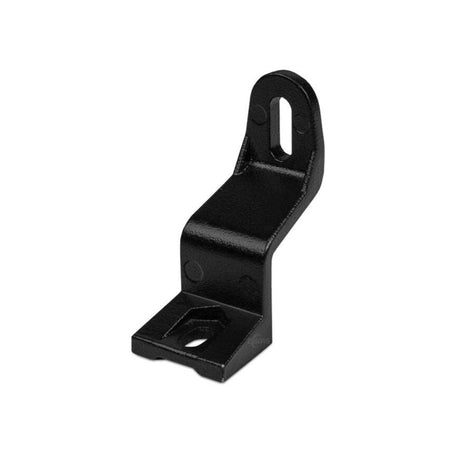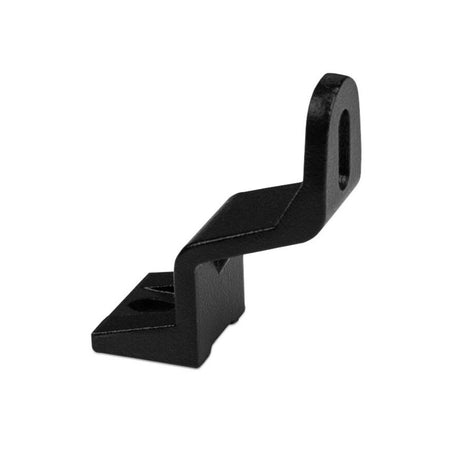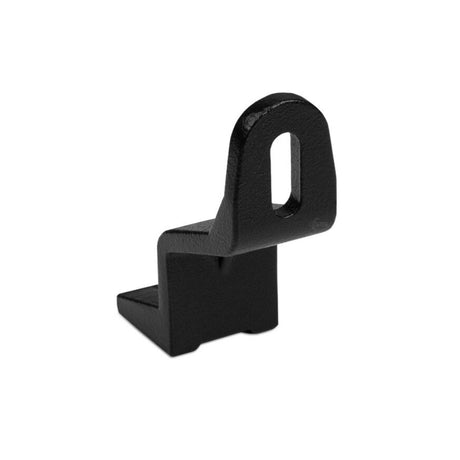Upgrade your garage or workshop with professional-grade LED garage lights engineered for superior brightness and efficiency. Whether you're seeking powerful deformable ceiling lights, traditional shop lights, motion-activated security fixtures, or specialized task lighting, our curated selection features trusted brands known for exceptional performance and reliability. From basic installations to smart-enabled systems, these garage lights deliver the perfect combination of functionality and energy efficiency for any space.
Browse Our Collection of Garage Lights
Deformable LED Garage Lights
Linear/Traditional
Motion-Sensor Security Garage Lights
Specialty/Task Lighting
A Guide to Modern LED Garage Lights
Transform Your Workspace with Professional Garage Lighting Modern garage lighting solutions combine energy efficient LED technology with innovative designs to illuminate every square foot of your workspace. This guide will cover the best LED garage light ideas to enhance both functionality and aesthetics. Whether you’re upgrading from older models of fluorescent lights or seeking the perfect task lighting setup, today’s garage lighting fixtures offer unprecedented brightness and control.
Types of Garage Lighting Solutions:
- Deformable LED Ceiling Lights: High-output fixtures with adjustable panels
- Linear Shop Lights: Energy efficient options with daisy chain capability
- Motion Sensor Fixtures: Smart illumination for dark corners
- Wraparound Lights: Even light distribution across your space
- High Bay Lights: Perfect for garages with high ceilings
- LED Strip Lights: Flexible accent lighting solutions
Key Lighting Considerations for Your Garage:
- Light Output: Calculate lumens per square footage needed
- Color Temperature: Choose between warm white and daylight options
- Energy Efficiency: LED bulbs vs traditional fluorescent or incandescent bulbs
- Installation Type: Simple installation with plug-and-play or hardwired fixtures
- Control Options: Wall switch integration and motion sensors
- Natural Light Integration: Complementing existing daylight sources
Technical Specifications & Performance:
- Color Rendering Index (CRI): High CRI for accurate color representation
- Brightness Levels: 4000-8000 lumens for standard garages
- Energy Consumption: Cost effective LED options use 75% less energy
- Lifespan: 50,000+ hours for most LED garage lights
- Coverage Area: One fixture per 100-150 square feet
Smart Features & Modern Innovations:
- Motion-activated illumination
- Adjustable color temperatures
- Daisy chain connectivity
- Remote control options
- Energy efficient LEDs with smart sensors
- Bright light output with minimal heat
Installation & Optimization Tips:
- Calculate required light output based on garage size
- Position task lighting above work areas
- Use accent lighting to eliminate dark corners
- Consider ceiling height for optimal mounting
- Install enough light fixtures for even coverage
- Maximize energy efficiency with strategic placement
Best Practices for Garage Lighting:
- Layer different types of lighting (ambient, task, and accent)
- Choose fixtures based on ceiling height
- Plan for adequate light produced per square foot
- Select appropriate color temperature for your needs
- Ensure simple installation and maintenance access
- Consider future expansion with daisy chain options
Understanding Modern LED Garage Lights Solutions
Today’s garage light options combine innovative LED technology with intelligent design features to transform traditional workspaces. From energy efficient shop lights to sophisticated motion-sensing fixtures, modern garage lighting options deliver superior illumination while minimizing energy consumption.
Essential Lighting Components:
- LED Shop Lights: Energy efficient primary illumination
- Task Lighting: Focused brightness for workbenches
- Accent Lighting: Strip lights for dark corners
- Motion Sensors: Smart activation for convenience
- Natural Light Integration: Complementary daylight solutions
- High Bay Options: Solutions for high ceilings
Choosing the right garage lighting fixtures requires careful consideration of your space’s unique requirements. Most garages benefit from a layered approach, combining ambient lighting with targeted task lighting to ensure optimal visibility for every activity.
Key Performance Metrics:
- Light Output: 4000-8000 lumens for standard garage spaces
- Color Temperature: 4000K-5000K for daylight simulation
- Energy Efficiency: 75% less consumption than fluorescent bulbs
- Coverage Area: One fixture per 100-150 square feet
- Color Rendering Index: 80+ CRI for accurate color representation
- Lifespan: 50,000+ hours of reliable operation
Understanding your garage’s square footage and ceiling height helps determine the optimal lighting configuration. Whether you simply plug in wraparound lights or install a comprehensive daisy chain system, proper planning ensures adequate brightness throughout your space.
Installation Considerations:
- Mounting height optimization
- Electrical connection requirements
- Motion sensor positioning
- Light fixture spacing
- Wall switch integration
- Future expansion capabilities
Modern LED garage lights offer significant advantages over older models using fluorescent or incandescent bulbs. The bright light output, combined with energy efficient operation, makes LED solutions increasingly cost effective for both residential and commercial applications.
Smart Features & Controls:
- One-switch operation capabilities
- Adjustable color temperatures
- Motion-activated illumination
- Remote control options
- Brightness adjustment settings
- Energy consumption monitoring
Understanding Your Garage Lighting Needs
Before selecting the best LED garage lights for your space, it’s essential to understand your specific needs. Consider the size of your garage, the number of windows, and the type of activities you’ll be performing. Think about the tasks you’ll be doing, such as working on projects, parking cars, or storing items. This will help you determine the type and amount of lighting you need.
For example, if you’ll be working on projects, you may need task lighting that provides a bright, focused light. If you’ll be storing items, you may need ambient lighting that provides a softer, more general light. By understanding your needs, you can choose the best garage lighting options for your space.
Installation & Setup Guide for Garage Lights
Proper installation of garage lighting fixtures ensures optimal performance and longevity. Whether upgrading from fluorescent lights or starting fresh, understanding the basics of fixture placement and electrical requirements is crucial for achieving the best possible illumination.
Pre-Installation Planning:
- Calculate square footage requirements
- Assess existing natural light sources
- Map out dark corners and work areas
- Evaluate ceiling height constraints
- Plan wire routing and switches
- Consider future expansion needs
- Utilize recessed lights for focused illumination while occupying no physical space in the room
A well-planned garage lighting system starts with understanding your space’s unique characteristics. Most garages benefit from a combination of ceiling-mounted fixtures and task lighting to ensure adequate brightness for both general use and detailed work.
Safety and Security Features
Garage lighting can also play a crucial role in safety and security. Consider installing motion-activated lights that turn on when someone enters the garage. This can deter intruders and provide an added layer of security. Additionally, consider installing lights with emergency backup power sources, such as batteries or generators, to ensure that your garage remains lit during power outages.
It’s also important to consider the safety features of your garage lighting fixtures. Look for fixtures that are UL-listed and meet industry safety standards. Avoid using lights that are damaged or worn out, as they can pose a fire hazard.
Maintenance & Optimization Tips for LED Garage Lights
Regular Maintenance Checklist:
- Clean fixtures quarterly for maximum light output
- Check motion sensors for proper operation
- Inspect daisy chain connections
- Verify color temperature settings
- Monitor energy efficiency performance
- Test emergency backup systems
Maintaining your garage lights extends their lifespan and ensures consistent illumination. Simple installation of LED bulbs offers significant advantages over older models, with minimal maintenance requirements and superior energy efficiency.
Energy Efficient Solutions & Cost Savings for LED Garage Ceiling Lights
Modern LED garage lights deliver significant cost savings through:
- Reduced energy consumption
- Longer bulb lifespan
- Lower maintenance requirements
- Smart control capabilities
- Efficient light distribution
- Minimal heat generation
Troubleshooting Guide for Garage Lights
Even the most reliable garage lighting systems may encounter occasional issues. Understanding common problems and their solutions ensures continuous optimal performance of your lighting fixtures.
Common Issues & Solutions:
- Motion Sensor Malfunctions: Adjust sensitivity settings
- Uneven Light Distribution: Reposition or add fixtures
- Flickering LED Bulbs: Check connections and compatibility
- Color Temperature Shifts: Verify driver settings
- Dark Spots: Evaluate fixture spacing
- Delayed Response Time: Clean sensors and check wiring
Most garage lighting problems can be resolved through simple diagnostics and adjustments. Regular maintenance of your light fixtures helps prevent many common issues before they impact your workspace illumination.
Seasonal Lighting Adjustments to Enhance Garage Lighting Solutions
Optimize your garage lighting throughout the year by adapting to changing natural light conditions and seasonal requirements.
Seasonal Considerations:
- Winter: Increase artificial light during shorter days
- Spring: Balance natural and artificial light
- Summer: Minimize heat from light fixtures
- Fall: Adjust motion sensor timing for earlier darkness
- Year-round: Monitor energy efficiency
- Weather: Maintain weatherproof seals
Understanding how seasonal changes affect your garage's natural light helps you adjust your lighting fixtures for consistent illumination and optimal energy efficiency.
Advanced Automation Options
Transform your garage lighting system with smart technology and automated controls for enhanced functionality and energy savings.
Smart Integration Features:
- Smartphone app control
- Automated scheduling
- Daylight harvesting
- Occupancy-based adjustment
- Temperature monitoring
- Energy usage tracking
Modern garage lights can be integrated with home automation systems to create intelligent lighting scenarios that adapt to your needs while maintaining energy efficient operation.
Professional Installation Recommendations
While many garage lighting solutions offer simple installation options, some situations benefit from professional expertise.
When to Consider Professional Installation:
- Complex electrical requirements
- High ceiling mounting
- Custom control systems
- Multiple circuit integration
- Safety certification needs
- Permit requirements
Professional installation ensures your garage lighting meets local codes while delivering optimal performance. For most garages, careful planning and proper mounting height considerations contribute to successful lighting outcomes.
Safety & Compliance Tips:
- Verify electrical load capacity
- Install proper grounding
- Maintain clearance requirements
- Use appropriate wire gauges
- Follow manufacturer guidelines
- Document installation details
Maximizing Natural Light in Your Garage
While artificial lighting is essential for garages, natural light can also play a significant role in illuminating your space. Here are some tips for maximizing natural light in your garage:
- Install skylights or larger windows to allow more natural light to enter the garage.
- Use mirrors or reflective surfaces to bounce natural light around the garage and make it appear brighter.
- Paint the garage walls and ceiling with light-colored paint to reflect natural light and make the space appear brighter.
- Consider installing solar tubes or sun pipes to bring natural light from the roof down to the garage floor.
By maximizing natural light in your garage, you can reduce your reliance on artificial lighting and create a brighter, more welcoming space.
Common Questions About Garage Lighting:
What is the best wattage for outdoor garage lights?
For outdoor garage lights, 60-100 watts equivalent LED bulbs (about 9-15 watts actual power consumption) provide optimal illumination for most residential applications. This wattage ensures sufficient visibility while maintaining energy efficiency.
Do LED lights interfere with garage door openers?
LED lights rarely interfere with garage door openers, but some poorly shielded LED bulbs can emit radio frequency interference that affects opener signals. Using high-quality, FCC-certified LED bulbs eliminates this potential issue.
What size should outdoor garage lights be?
Outdoor garage lights should typically be 1/4 to 1/3 the height of your garage door for proper scale and aesthetics. For a standard 7-foot garage door, fixtures between 16-24 inches tall provide ideal proportions.
How many lumens do I need per square foot for garage lights?
For general garage use, aim for 50-75 lumens per square foot. Workshop areas require 75-100 lumens per square foot, while detailed task areas need 100-150 lumens per square foot.
What's the ideal color temperature for a workspace?
For garage workspaces, 5000K (daylight) is optimal as it provides the best color accuracy and reduces eye strain. If you're primarily using the space for storage, 4000K (cool white) is sufficient.
Can I daisy chain different types of fixtures?
You can daisy chain fixtures as long as they share the same voltage requirements and have built-in connecting ports. Most systems allow 4-6 fixtures to be connected, but always check manufacturer specifications.
Should I choose flush mount or hanging fixtures?
For ceilings under 8 feet, choose flush mount fixtures to maximize headroom. Hanging fixtures are ideal for ceilings over 12 feet or when you need focused task lighting for specific work areas.
How do I eliminate shadows and dark corners?
Install primary lighting fixtures 4-6 feet apart and use LED strip lights for corners and under-cabinet areas. Adding motion sensors in key areas ensures consistent illumination throughout the space.
What’s the best height for task lighting?
For workbench and task areas, mount lights 36-42 inches above the work surface for optimal illumination without glare. Adjustable fixtures allow you to fine-tune the height based on specific tasks and user preferences.

















